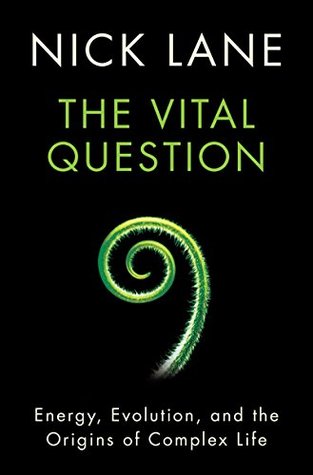More on this book
Community
Kindle Notes & Highlights
by
Nick Lane
Read between
February 28 - March 27, 2017
In all forms of photosynthesis, the energy of light is used to strip electrons from an unwilling donor. The electrons are then forced on to carbon dioxide to form organic molecules.
Oxygen does not specify what will evolve, the argument goes, but it permits the evolution of far greater complexity – it releases the brakes.
Any attempt to explain a singular event will always have the appearance of a fluke about it.
Why would a virus not be alive? Because it does not have any active metabolism of its own; it relies entirely on the power of its host.
So the release of heat when oil and water separate actually increases entropy. In terms of overall entropy, then, and taking all these physical interactions into consideration, an ordered oily membrane around a cell is a higher entropy state than a random mixture of immiscible molecules, even though it looks more ordered.2
The idea that life is a low-entropy state – that it is more organised than a soup – is not strictly true. The order and organisation of life is more than matched by the increased disorder of the surroundings.
Why are such decisions necessary? In Chapter 2 we discussed the sheer power of the proton-motive force. The mitochondrial inner membrane has an electrical potential of about 150–200 millivolts. As the membrane is just 5 nanometres thick, we noted that this translates into a field strength of 30 million volts per metre, equal to a bolt of lightning. Woe betide you if you lose control over such an electrical charge!


